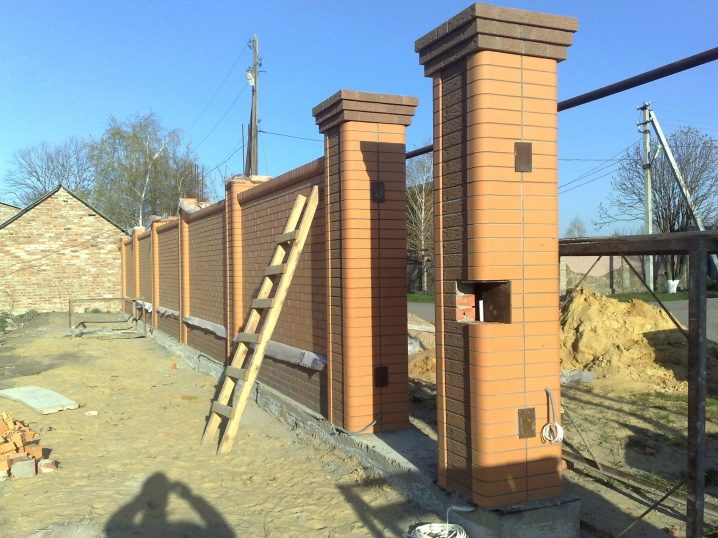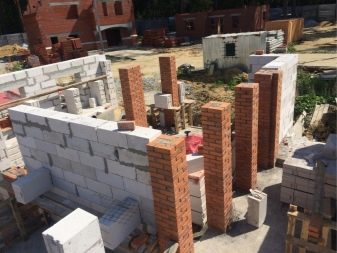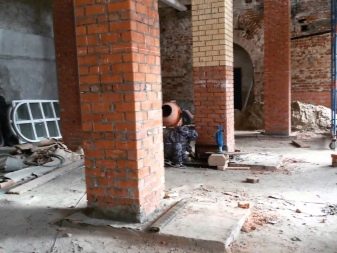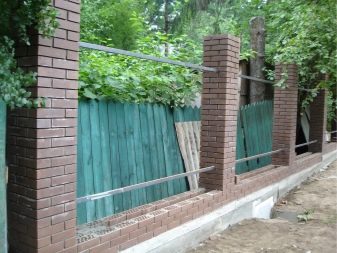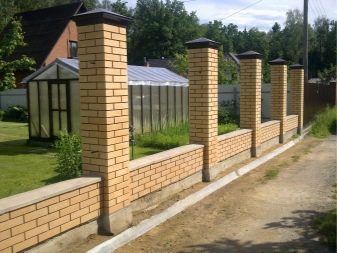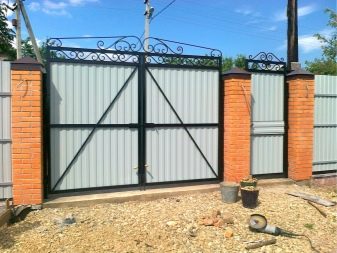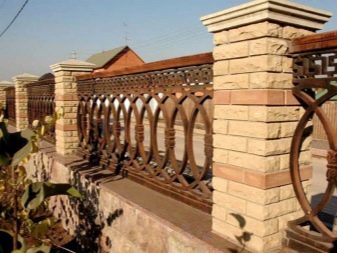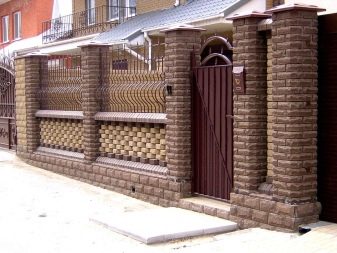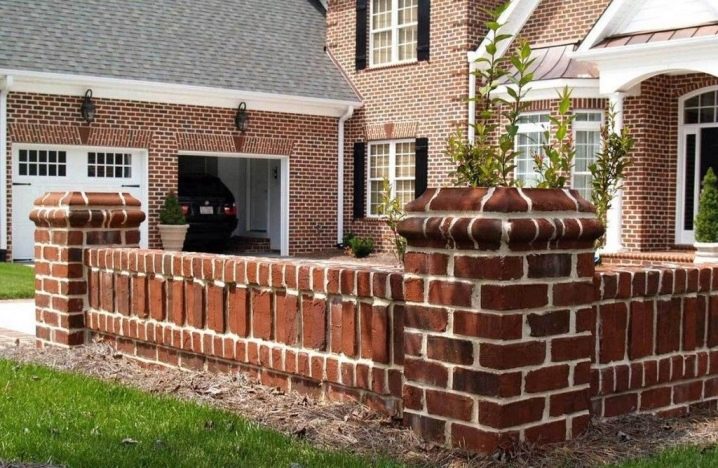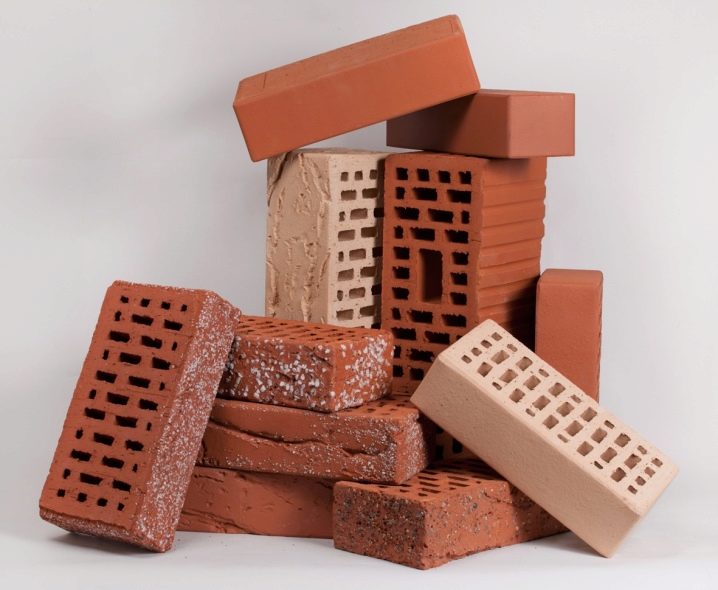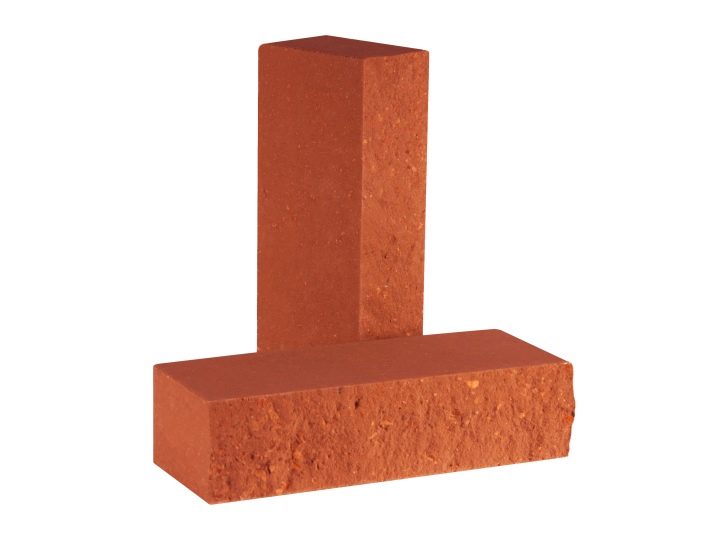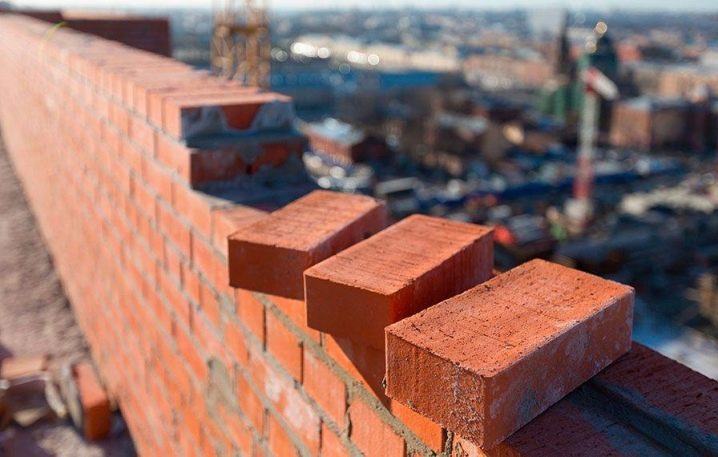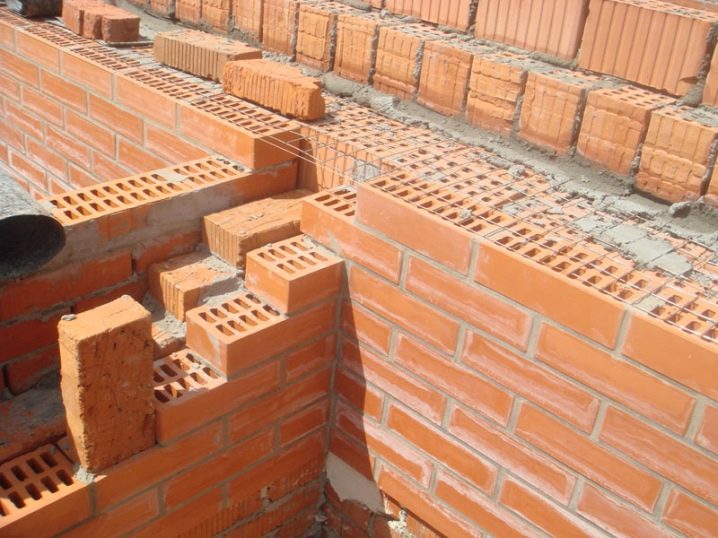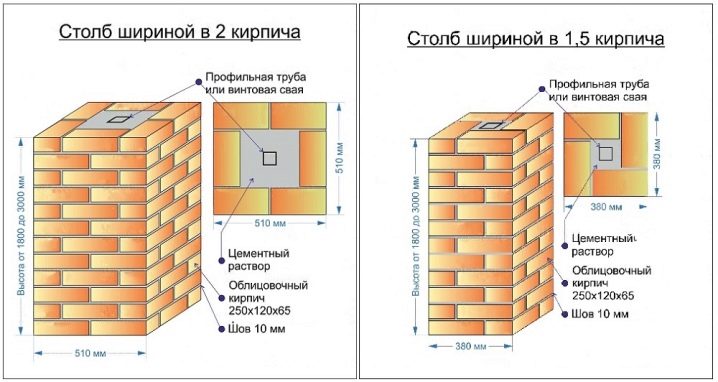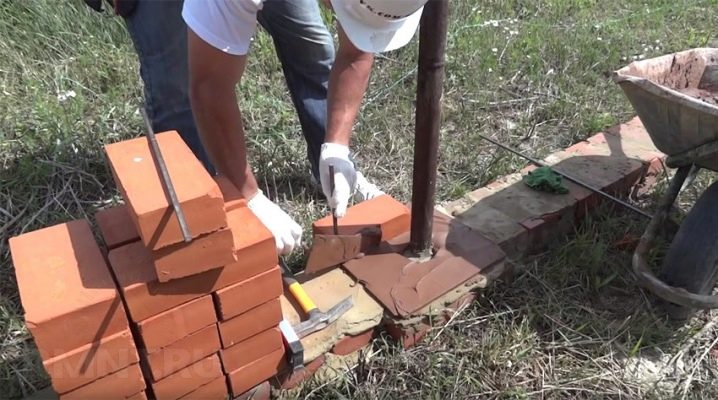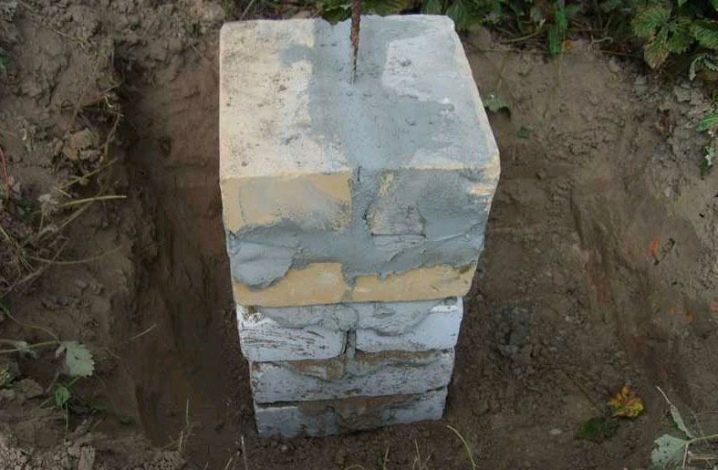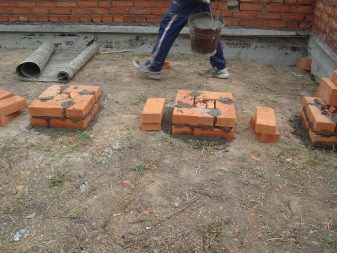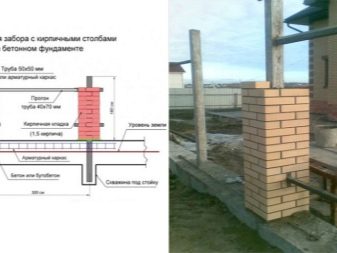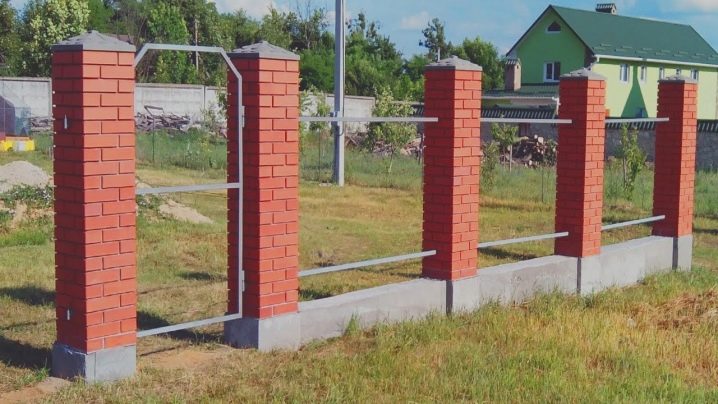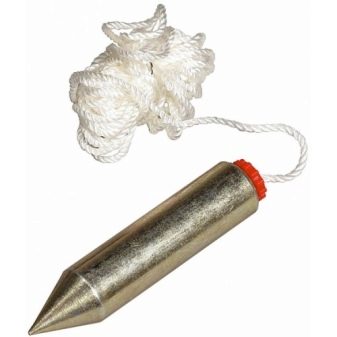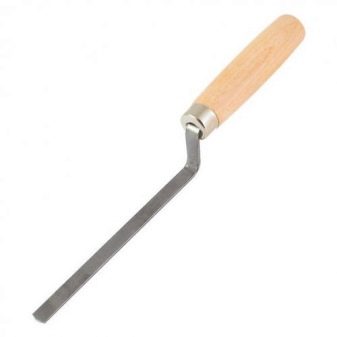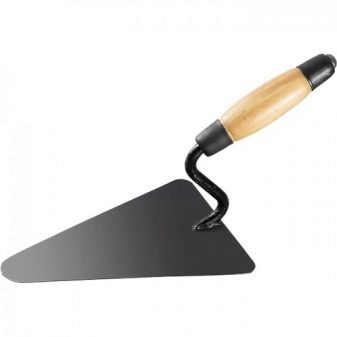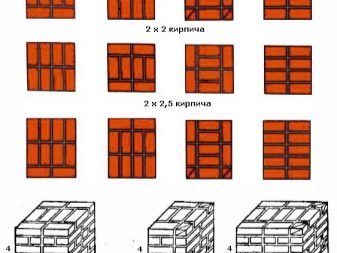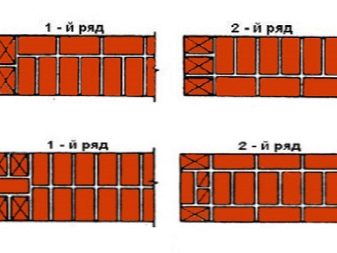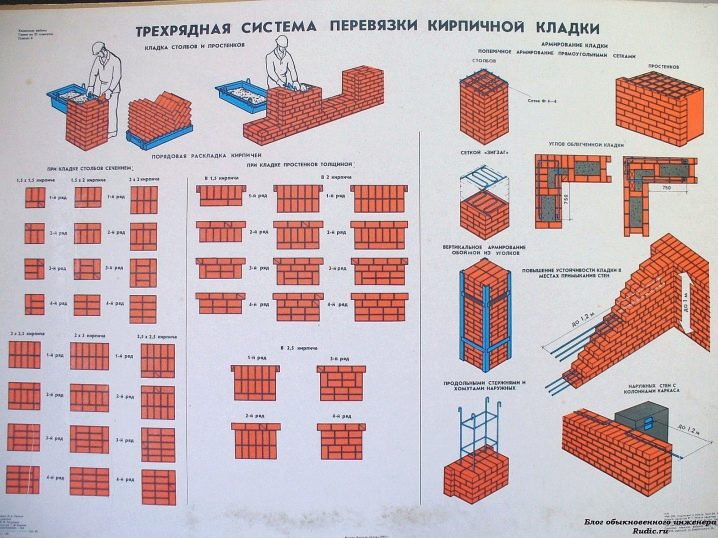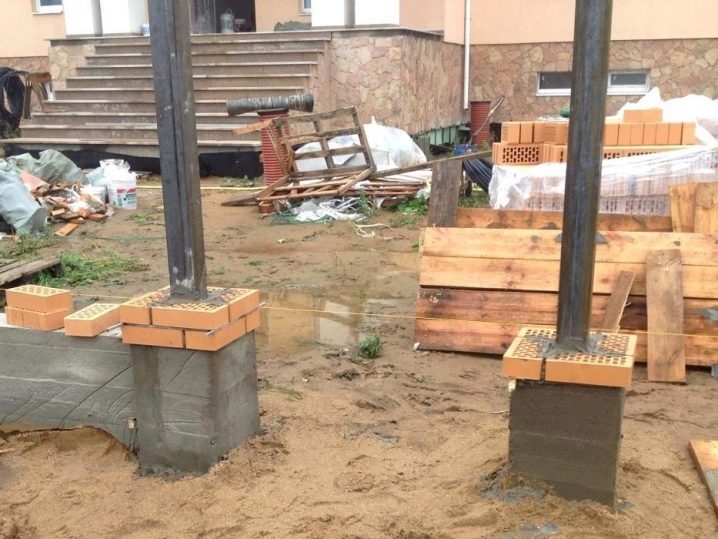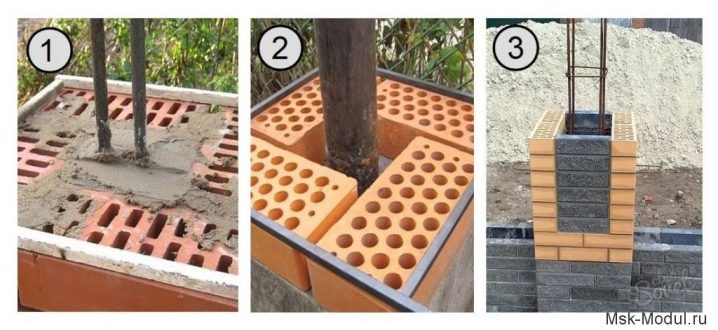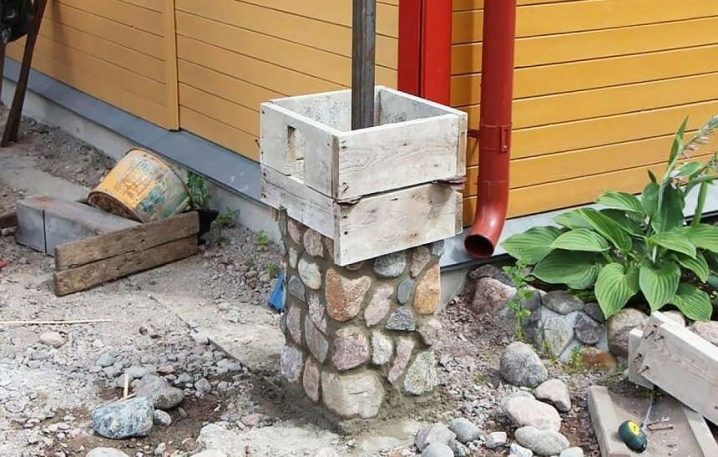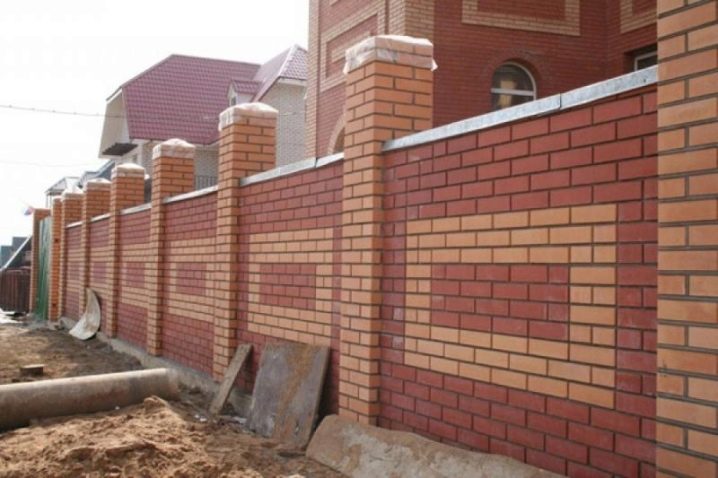How to make brick pillars?
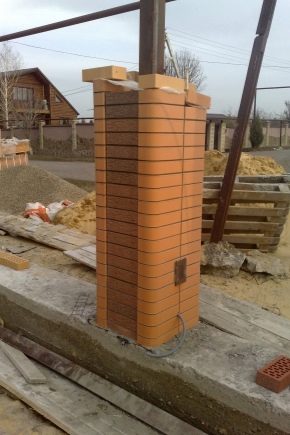
Brick pillars are important components of many buildings. The design and construction of such parts must be approached with full responsibility, since the quality and durability of the entire construction as a whole often depends on them. It is quite possible to make brick columns with your own hands. Today we will look at how to do it correctly in order to get the desired result.
Types of designs
Columns of bricks are vertical architectural structures that are required to maintain the mounted and additional reinforcement of vertical bases.In addition, these products are often addressed to give buildings a more interesting and stylish appearance. Brick columns "with a bang" cope with the role of decorative components. Based on its main purpose, distinguish the following types of these structures.
- Carriers These types of brick pillars play the role of reliable and strong supports for maintaining mounted systems. Bearing columns take on all the load from these grounds. In the future, this load is transmitted directly to the foundation of the building.
- Fence. Columns of this type are simple structures in which all the individual elements are connected to each other, and sections remain between them. Basically, the only load that these structures carry is their own weight. If any additional components are installed between these supports, then horizontal loads of various kinds start to act on the columns (in most situations they are insignificant).
- Gate type. Elements of impressive weight, which are also movable (that is, they move relative to the brick pillars themselves), are hung on the said supports of bricks.These structures can withstand the load from their own weight, and horizontal loads from structures hung on them. It is worth considering that the horizontal loads in this situation may change the direction of the application.
- Decorative. These attractive brick structures are connected to load-bearing wall bases. Mechanically, they are almost not loaded. Such details play the role of aesthetic decorations that adorn the construction.
Whatever version of brick pillars you plan to build, in any case, you will need to take into account one important feature - there should not be long rows of masonry in such structures. In addition, such products must have a square or rectangular cross-section with its fullness - this makes the structures to the maximum stable, strong and reliable. Often these structures additionally strengthened, so that they turned out better. Based on these qualities, there are products with and without reinforcement.
Recommendations for choosing a brick
It doesn't matter what columns you are going to design - for gates, fence or bearing,In any case, you will need to purchase high-quality building materials, characterized by good performance and long service life. Only from such products the columns will turn out really stable, reliable and attractive.
Bricks for such structures can be both full-bodied and hollow. The main thing is to take into account the properties of frost resistance, moisture absorption and wear resistance of these building materials. It is necessary to select a brick that will not be afraid of adverse external factors, such as precipitation or temperature changes. In addition, experts strongly recommend to give preference only to environmentally friendly and safe products that will not have a negative impact on the environment or human health.
To build columns you can not buy a brick whose weight is less than 4.3 kg. If the bricks you plan to trim the outer surface of the pillars, you will have to look for building materials with a relief or smooth surface, uniform color.
It is also important to take into account the quality of the brick.In no case should there be any damages or defects on its surface - cracks, chips, deep scratches or crumbling corners. It is better to refuse the use of these building materials - they will not last for a long time, and they will fail to build reliable structures. The quality of the brick should be perfect. Only from such products will get good and quality pillars.
How to calculate the amount of material?
Before embarking on the independent production of beautiful and high-quality brick pillars, it is advisable to calculate the amount of building materials you need to purchase. Experts say that when using solid brick, additional calculations can be waived. However, there is often a need to identify the smallest section, which will be sufficient for good strength and stability of structures.
In order to determine all the necessary parameters, it is very important to have all the required information about the brand of acquired building materials, the perimeter of the crossbar support on the pillars, the sectional area and the volume of the transmitted load. It should be borne in mind that all the nuances of counting brick pillars or wall foundations are described in detail in the relevant SNiPs (for example, SNiP II-22-81 (1995).
In addition, when calculating the required products it is necessary to rely on the predetermined dimensional parameters of future columns (one should keep in mind their height and cross section). Counting is usually based on the number of bricks in a row, given the seam of 10 mm. Experts recommend taking into account the following source data:
- if the pillars have a cross section of 30x30 cm, then you will need to lay out 4 simple bricks in the same row;
- if the section is 40x40 cm, then there will already be 6 elements in the row;
- at a cross section of 60x60 cm, the calculation of the volume of bricks should be done as in 4 separate columns with a cross section of 30x30 cm;
- if the cross section reaches 80x80 cm, then first prepare a 60x60 cm column, and then revet it with brickwork.
The number of rows usually depends on the parameter of the brick thickness, taking into account the increase in the dimensions of the seam. Single standard bricks are made with a width of 65 mm (75 mm with a seam), and one-and-a-half bricks - 88 mm (with a seam of 98 mm). If we divide the parameter of the height of a brick pillar by the specified values, then it will be possible to identify the required number of rows. And if you multiply it by the number of individual bricks in each row, then the total need for building materials will be known.
In order to get the final amount, you will need to add about 10-15% to the battle, possible marriage and garbage (in this matter it is also recommended to take into account the experience and experience of the master who will carry out the work).
Foundation building
To install brick columns, you must first build high-quality foundation foundations. For example, options for the fence belonging to the class of Lux, especially need a reliable foundation (for example, these facilities, we consider all the working steps). It should be constructed as follows.
- First, carry out the marking of the territory in which it is planned to install brick columns. This is done in the same way as when installing wooden or metal structures. It should be borne in mind that the same fence of brick pillars should be placed on the site in accordance with the cadastral plan.
- First you need to mark the areas on which the corner supports will be located. To do this, at the right points you will need to drive in small wooden pegs and draw a cord between them.
- Then you need to identify the step between the supports. It will depend on the canvases that are planned to be installed between the individual pillars.For example, a step of not more than 2.5 m is suitable for a professional sheet.
Further under the foundation the excavation rummages. If the soil at the site is heaving, then first the supporting parts will need to be properly protected from the influence of water in the soil. For this, the lower part of the columns is bottled. After preparing the pit for the pillars, it will be possible to proceed directly to the design of the foundation. The following steps are envisaged:
- put a cushion of rubble and sand at 10-15 cm on the bottom of the excavated hole;
- then fix the axis of the support part in the center;
- 2–3 rods (reinforcement) 90 cm high are placed parallel to the axis;
- then it is necessary to lay a cushion of sand and gravel, parallel to checking the verticality of the support element;
- expanding the hole, it is necessary to lay a 5-centimeter cushion of rubble and sand over the entire area;
- you will need to constantly check the horizontal axis;
- further it will be necessary to pour the concrete flush with the level of the soil;
- the concrete must be completely dry for 7-10 days.
Masonry layout
Independently lay out columns of bricks can do it yourself. At the same time, it is important to adhere to a specific scheme so that the work is understandable, and the result is expected.
To build such structures yourself, you will need to stock up on the following required tools:
- trowel (trowel);
- spatula;
- hammer pick;
- jointing;
- ladle;
- a plumb line;
- construction bubble or laser level;
- gon;
- iron ruler.
To correctly prepare the solution, it is best to stock up on high-quality construction mixer. As for the installation of reinforcement parts and cutting bricks, here such a functional device as a Bulgarian is ideal.
The level of strength of a column of brick depends largely on the competent execution of dressing individual rows, which provides for a special laying. Consider the most popular options.
If the size is 2x1.5 bricks (6 parts in one row), then the laying is required to be carried out as follows:
- 1 row will consist of four bricks, stacked between each other with spoons; and two will need to lay across the spoons to poke previous parts;
- 2 row is laid out in the same way, but it is necessary to make a turn in 180 degrees;
- The 3rd row will consist of 3 bricks, arranged in parallel in the center with two facing on each side; in this case, you will need to fill the corners with separate halves of bricks;
- The 4th row is carried out by mounting 2 parallel clutches of 3 bricks each.
After that do a dressing.
If the size is 2x2 bricks, that is, 8 blocks in one row, then the sequence of actions will be as follows:
- 1 row will be stacked on 4 matched spoons of brick, stacked with the help of a jab;
- The 2nd row will consist of four bricks laid in parallel in the center, you will need to attach the remaining parts to their butting with spoons;
- 3 row the previous combination will need to be rotated 90 degrees;
- 4 row is laid out like a starting row, but with a turn of 90 degrees.
The described complicated bond consisting of four brick rows will guarantee the highest strength characteristics of the pillars. In order to further strengthen these bases, after each dressing cycle, you will need to fix the reinforcing mesh. If even small loads take place, special reinforcing rods are placed on the supporting columns of the blocks in the center of the masonry.
In addition, the details of the brick design under the logs. In order to properly lay such structures, dig small trenches, lay the substrate,make the formwork, bind the reinforcement parts, prepare the grid with cells, and then install special brackets and cover them with brick.
Useful tips
If you decide to build a solid fence out of brick pillars, then you should know that the heavier it is, the more solid it will be to make supports. That is why it is so important to correctly calculate the height of all the constituent structures of the supports and the size of their section.
For the construction of brick columns, supports are often used iron pipe. It is around the pipe and set brickwork. The lower half of the metal part is pushed into the ground at 1.7 m.
Before installation of brick pillars, a reliable tape base is most often constructed. It has excellent strength characteristics and does not require much depth.
In the manufacture of heavy columns experienced craftsmen strongly recommend pouring the space that remains between such details as steel reinforcement and lined brick.
It should be borne in mind that special pillars under the logs are a very important technological step in flooring.Such designs make it possible to avoid the appearance of fungus and mold, as well as subsidence of the floorboard. Due to this, these materials will be able to serve much longer.
Brick pillars, if desired, can be decorated. To do this, it is permissible to use different colored stones or glass beads. The seams can be made black by adding a bit of soot to the solution.
If you want to build beautiful screw posts, then you should turn to the laying of 1.5 bricks. In this case, the blocks themselves will need to be laid with a slight offset. Each brick will need to be put with a ledge.
If you decide to independently manufacture reliable brick pillars, then you definitely need to purchase only high-quality tools and building materials. Do not save on the purchase of these components, because the columns must be high strength. Weak supporting parts may suffer under heavy loads, which will eventually lead to dire consequences.
How to make brick pillars, you will learn from the video.
